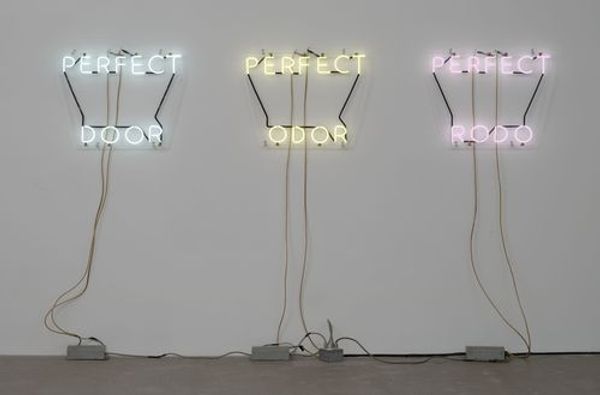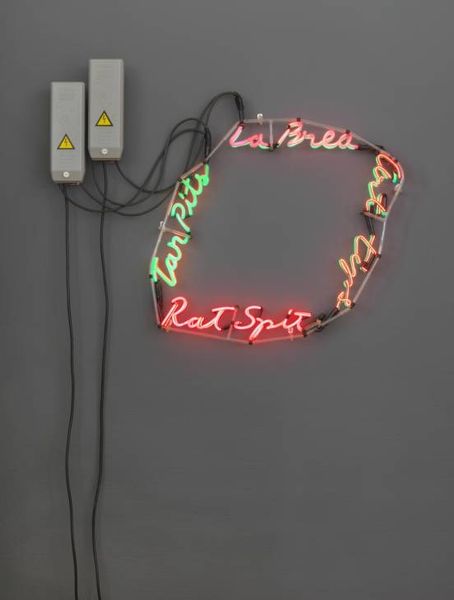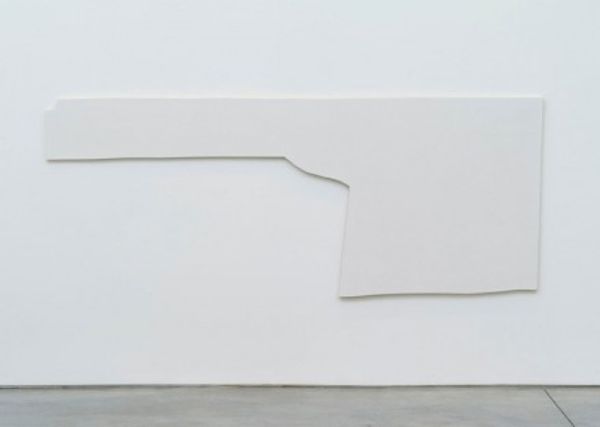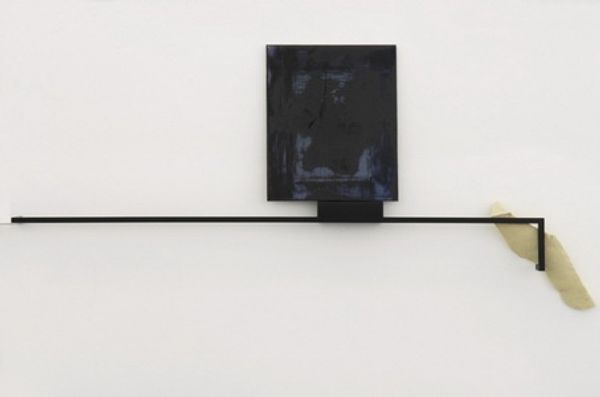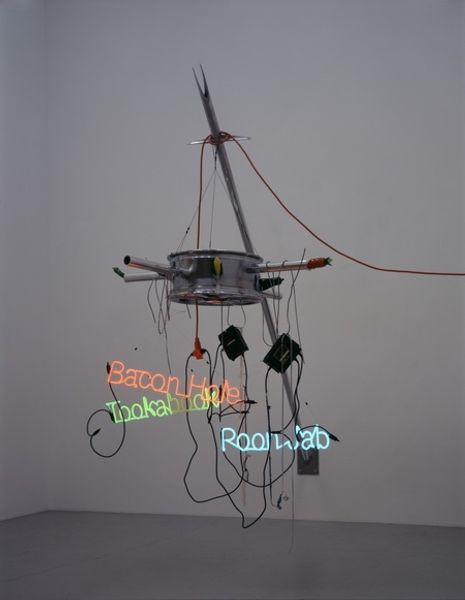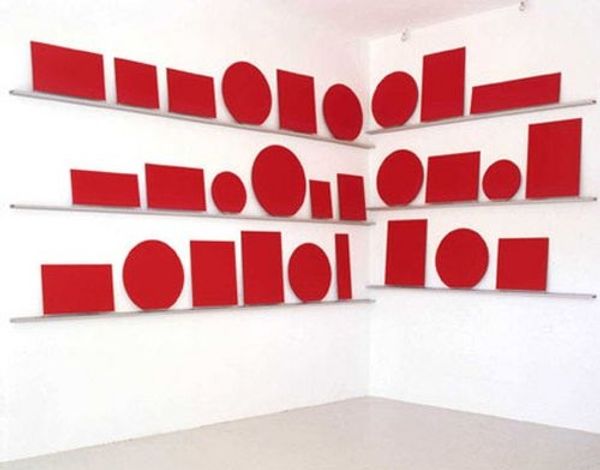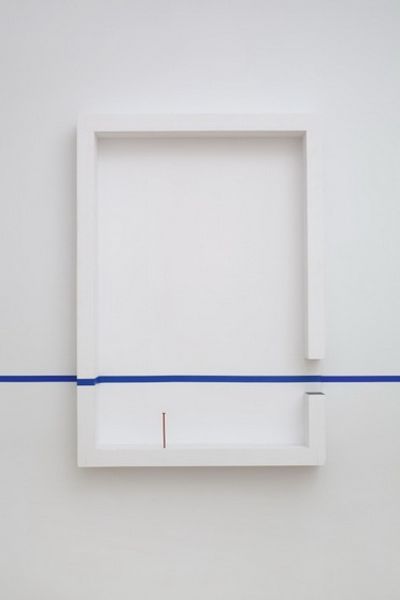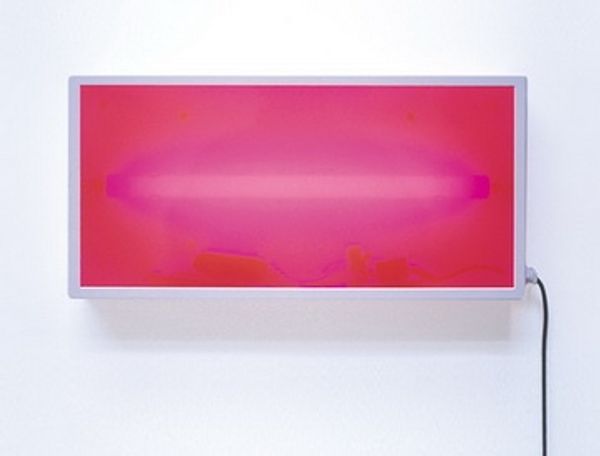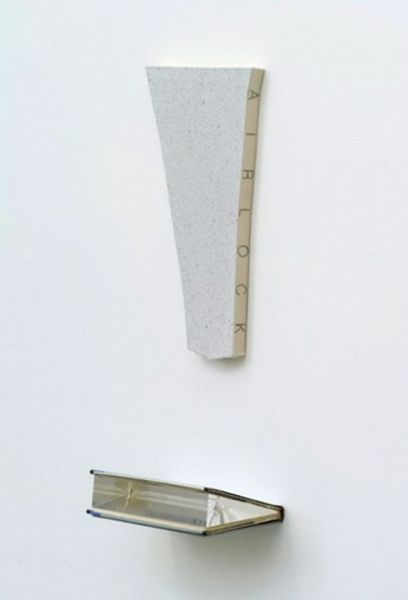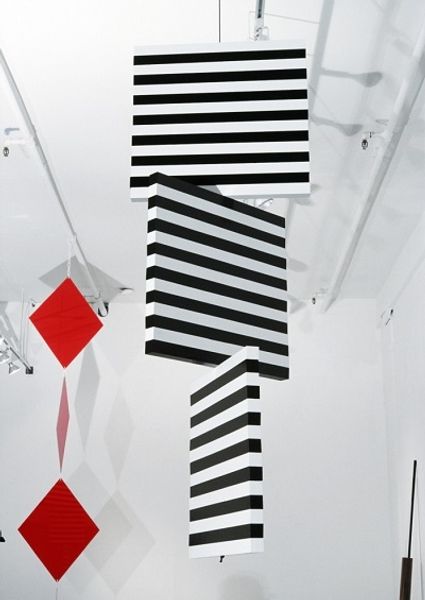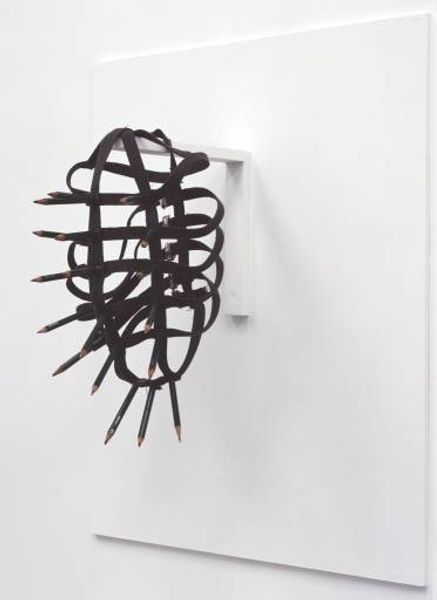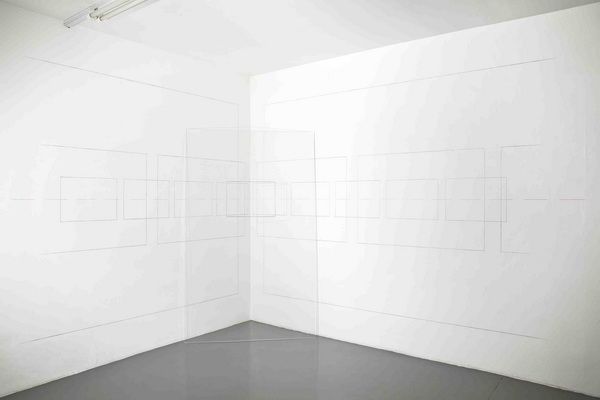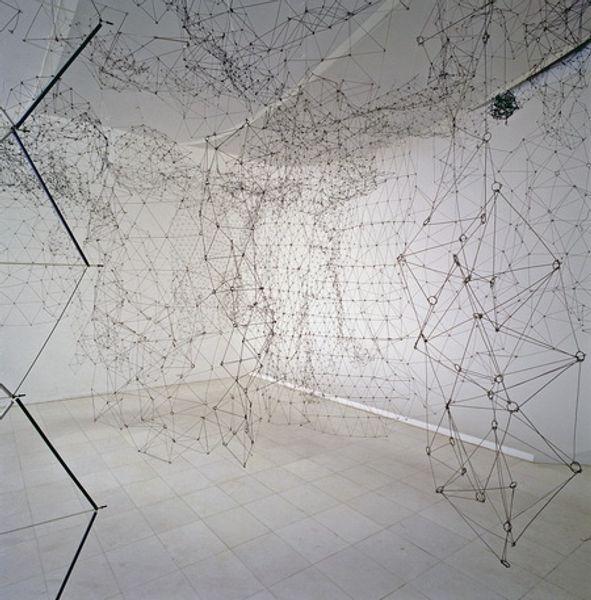
#
clean typography
#
script typography
#
bold typography
#
small typography
#
hand drawn type
#
typography
#
bold font
#
minimal typography
#
text
#
experimental typography
#
small lettering
Copyright: Markus Raetz,Fair Use
Curator: Markus Raetz's 1999 work, "Same," immediately strikes me as clever, even deceptively simple. The material appears to be wire, formed into the letters of its title, and placed before a mirror. Editor: It has a cool, almost clinical detachment. The stark presentation certainly pushes it away from feeling…warm. It seems to investigate some conceptual concern in an attempt at minimalism. Curator: Absolutely. Let’s consider the semiotic play at work. The sculpture spells out "SAME," but the mirrored reflection presents what appears to be that exact word flipped. It isn’t, of course. Look closer. Editor: Of course, one reads "SAME," and the reflection gives us "ESME"—almost a new persona arising from what we consider to be the ‘same’. Esme could refer to various individuals across different periods of social history, effectively widening what at first seems narrow. Curator: Precisely! The act of reflection doesn’t duplicate. It inverts, it reverses, but still manages to hint at likeness. This is characteristic of Raetz’s interest in perception and the instability of meaning. Editor: So what societal anxieties might have preoccupied Raetz as he puzzled at likeness or replication? The work’s date situates its emergence amid late 90s debates concerning the implications of cloning. I also wonder how digital imaging or the spectacle operated within that historical context and within Raetz's milieu? Curator: That interplay of mediums opens fascinating avenues of interpretation. If we examine solely the structural properties and arrangement of shapes in Raetz's word-image, it provokes reflection—quite literally—on how we receive language. Its stark typography serves to alienate language from immediate meaning, instead highlighting its shape and composition. Editor: Yes, placing "SAME" in dialogue with the refracted “ESME" highlights the instability inherent not just in written forms but also within the frameworks we deploy to organize what counts as either "same" or "different." Curator: In this light, the choice of such a plain material, like wire, helps amplify this reading. It lacks pretension, acting merely as a means to an end, or in other words, allowing the work's concepts to come into being. Editor: In light of your observation, I leave my time with "Same" wondering: In a world mediated by visual echoes, who decides what deserves an inverse? And who suffers erasure?
Comments
No comments
Be the first to comment and join the conversation on the ultimate creative platform.
